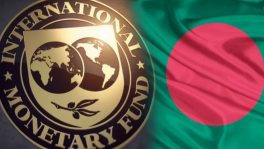Capitalising FDI diversion and creation effects
A host of factors – from issuing trade licence to double taxation treaties – need to be addressed simultaneously, not mere promises of SEZs, to convince investors that Bangladesh means business. You cannot get ahead in this game of attracting long-term investments without reducing both absolute and relative risks

Global flows of foreign direct investment are likely to tumble 40 percent in 2020 from the 2019 level of $1.5 trillion and another 5 to 10 percent in 2021, according to the World Investment Report of the United Nations Conference on Trade and Development.
The bad news is the projected decline. But there is good news: it is unlikely to be less of the same.
First, the forces driving FDI diversion from existing hosts have become stronger on the back of the damage done to "brand China" because of the coronavirus and the realisation that the markets probably underpriced the risk of excessive dependence of the global supply chain on China.
So the relocation of multinational companies' operations from China that began before the pandemic due to rising labour costs, an ageing workforce and the trade war will only be accelerated now.
Second, the pandemic has created new demand for FDIs as countries look to capitalise on opportunities virus mitigation worldwide has opened for pharmaceutical and non-pharmaceutical products.
The increased demand for these products, whose markets are global, can be expected to sustain for a while regardless of the uncertainties about the dynamics of the virus.
The development has shifted the distribution of the rate of returns from investments in favour of these activities.
FDI diversion and creation effects
While the reassessment of exposure to China and looking elsewhere has started long before the pandemic, the virus just jolted the companies whose supply chains relied heavily on China.
The coronavirus has just added the risk of a public health emergency to the list of reasons to diversify supply chains out of China.
The pandemic has brought opportunities to repurpose the structure of several industries to meet newer needs and stimulated the development of vaccines, therapeutics, medical equipment, medical supplies and health care products, including life and medical insurances.
The emerging new public health norms such as masking and social distancing has created a demand for a whole range of non-pharmaceutical products, including choosing daily necessities online instead of going to conventional markets.

Consumer demand for disinfection cabinets, sweeping tools, washing equipment and high-quality food and sanitary products are increasing everywhere.
The capacity deficit to support the vast online data flow from the entire society at the same time has created a demand for telecommuting related products, including remote office tools, voice over internet protocol, web video conferencing, multi-person collaboration platform, digital and remote IT services.
The FDI diversion effect of the pandemic has barely begun to run its course while the opportunities for FDI creation are only beginning to unravel just like the properties of the coronavirus.
The challenge for countries vying for a share in the FDI diversion and creation effects of the pandemic is to find a place in the bandwidth of this global race through competitive policies and good governance.
The contest is closer than commonly perceived
The future state of play in the global economy is contingent on the trajectory of the virus and how governments adjust and coordinate the policy response to the pandemic-induced recession.
Relocation and virus mitigation will drive FDI flows even if global recovery stumbles for a while.
In a world where technology, higher-order skills and value chains are globalised, transaction costs, wages for lower-order skills and country risks will matter more in shaping destination choices than the pure rates of return.
Relocating firms are looking for alternatives that will help ride the novel constraints arising from the pre- and post-pandemic developments while retaining their cost competitiveness at levels not too dissimilar from being in China.
From the new location, they would want to produce and sell in their existing global markets as easily as they were able to from China.
Raphie Hayat of RaboResearch Global Economics & Markets recently constructed a "Where Will They Go index" (WWTGI), based on export baskets that are similar to China; manufacturing wages similar or lower than in China; and ease of doing business and institutional quality as measured by the World Bank.
They conclude no single country will reap all the benefits from an acceleration in production capacity relocation from China.
Thailand, Malaysia and Vietnam top the list based on the composite WWTGI. Myanmar, Pakistan and Bangladesh are at the bottom. In the middle are India, Indonesia, Philippines and South Korea.
Within Asia, the export baskets of Vietnam, Thailand, South Korea, Taiwan and Japan are the most like China, while those of Bangladesh, Myanmar and Pakistan are the least similar.
Wages are the lowest in Mongolia, Bangladesh and Sri Lanka, but it is much easier to do business in Singapore, South Korea and Taiwan.
Thailand, Malaysia, Taiwan and India are close contenders.
Outside Asia, Mexico is likely to be a contender due to its similarity to China's export basket.
India's ranking is boosted by its market size.
Surging property prices and wages in Southeast Asian countries are reducing their cost differential with China.
Many Southeast Asian countries are also China's biggest export markets.
Bangladesh has specialised in producing textiles, while Vietnam specialises more in, for example, the assembly of electronic products.
Exports in relatively less favoured destinations on these indicators could nevertheless get a boost due to the sheer size of China's shifting export basket.
The benefits from relocation of production from China to other Asian countries are thus likely to be spread out.
Specific sectors within countries could gain, such as the semiconductor sector in Malaysia and the automotive sector in Thailand.
Bangladesh is poised to harness dividends from pre-existing experience in textiles and pharmaceuticals.
The capacity to deliver personal protective equipment, masks, aprons, patient suits, disposable gowns, sanitisers and so on at internationally competitive prices is not beyond Bangladesh's reach despite the narrow export base, high transaction costs and low institutional quality.
The promise is evident in nearly $87 million exports of protective clothing and sanitising liquids and $23 million masks between March and June.
Scaling up will have to contend with competitors in China, Singapore, the US, Germany and the Netherlands.
Country risk may be decisive
International firms will likely diversify their production locations across multiple countries.
This would be a scaled-up and fast frontloaded version of the "China plus one" production strategy some international firms have recently been pursuing for diversification of country risks.
Countries able to provide additional diversification benefits in a well-rounded offshored FDI portfolio will be particularly attractive.
Investors will pay careful attention to the economic and financial policy environment.
Foreign equity restrictions; discriminatory screening or approval mechanisms; restrictions on key foreign personnel; operational bindings and whimsical changes in foreign exchange regulations magnify the dispersion of returns from investment in a specific destination, thus reducing their attractiveness.
Signalling the readiness to host through some eye-catching initiative in a strategic risk area can woo the first movers.
India is developing a land pool nearly double the size of Luxembourg in a bid to attract the relocators.
Acquiring land is complicated in India with multiple stakeholders.
Foreign companies must also comply with stringent land acquisition and labour laws, which drag projects from moving forward.
Bangladesh has a similar negative track record.
Investors need assurance that the land made available is beyond ownership dispute with key infrastructure already in place whether in the Special Economic Zones or outside.
Beyond making land available, a host of factors – from issuing trade licences to one-stop shops to double taxation treaties – need to be addressed simultaneously to convince investors that Bangladesh means business. The mere promises of SEZs will not do.
POLICY PREDICTABILITY UNDERPINS RISK PERCEPTIONS
Investors assess whether the pitches from the government align with state agencies and bureaucrats, who are the key players on the ground, what are the important timelines, and how the particular industry, where they want to invest, is regulated.
They do on-the-ground intelligence about proposed investment sites, local players, reliability of government officials and adherence to rules and regulations, clarity on tax incentives and retrospective liabilities and the established industrial ecosystem – area-wise support measures, feeder industries, backward, and forward linkages, real estate market, labour market and utilities.
Bangladesh currently does not have the best track record in dealing with interested investors and maintaining time consistency of policies.
Tata, Samsung and adidas came and left before committing fixed investments while among those who did, a few saw the rules of the game change abruptly and arbitrarily.
These never go unnoticed irrespective of whether they are captured in the widely used Doing Business or Global Competitiveness indices.
Nomura, a Japanese financial services firm, reports none out of the 51 companies who relocated their production out of China between April 2018 and August 2019 chose Bangladesh.
Three relocated to India, three to Indonesia, eight to Thailand, 11 to Taiwan, and 26 to Vietnam.
Bangladesh's highly bureaucratic structure of functioning and multiple instances of whimsical changes in policies hinders predictability considerably.
Foreign companies need more than land availability to finally choose their destination.
You cannot get ahead in this game without reducing both absolute and relative risks.


 Keep updated, follow The Business Standard's Google news channel
Keep updated, follow The Business Standard's Google news channel













